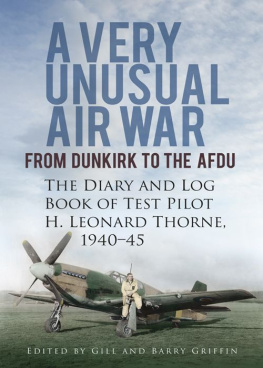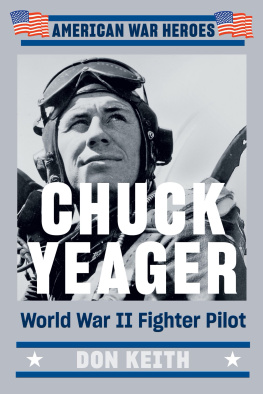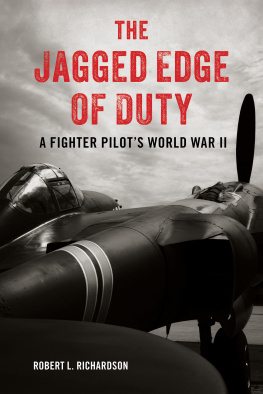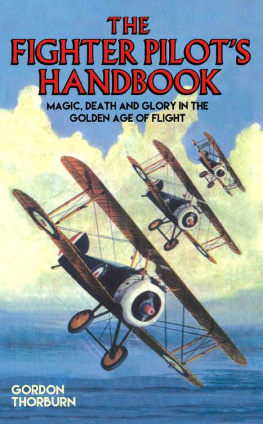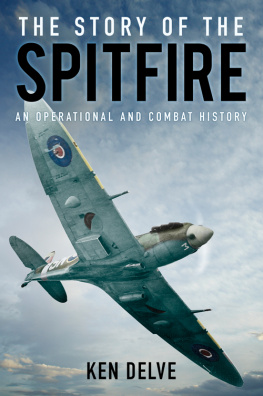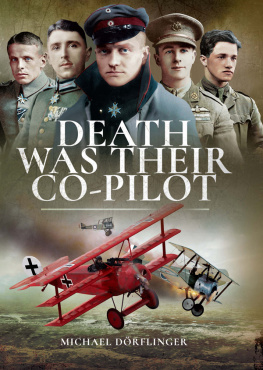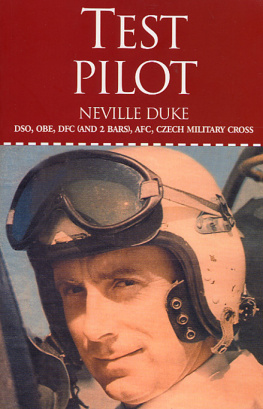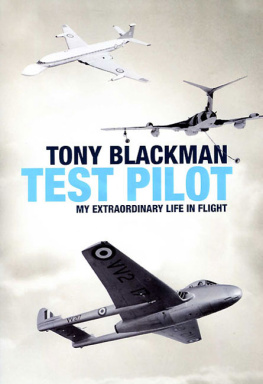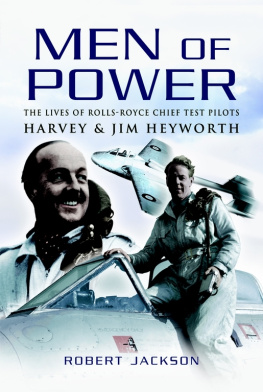Dedicated to the memory of F/Lt H.L. Len Thorne, A.E. and all of the brave men of Fighter Command who took part in the Second World War and subsequent conflicts.
Photographs from Len Thornes personal collection.
Edited and made ready for publication by the authors daughter and son-in-law, Gill and Barry Griffin.
Any errors are purely ours or Lens.
CONTENTS




Below is a photograph of a page in Len Thornes logbook dated October 1941. The left-hand side has been copied almost exactly in the following pages of this book but the right-hand leaf has had to be condensed so that both can be displayed on one sheet. There are columns for Single-Engine and Multi-Engine aircraft, sub-divided into Day and Night Flying. This is further divided into Dual or Pilot in single-engine aircraft and Dual, 1st or 2nd Pilot in multi-engine aeroplanes. There are also columns for Passenger, Instrument or Cloud flying. These have all been condensed to three columns, Dual, Pilot or Passenger. The detailed notes on the right-hand leaf have been incorporated into the story told in the text.
The summary boxes occur at the end of each month. They give details of the hours flown on each type of aeroplane and are signed by the pilot, the officer in command of a Flight and the squadron leader. In this case the O/C A Flight was F/Lt Norman C. Macqueen, DFC. Six months after this, on 4th May 1942, he was killed when his aircraft was hit by tracer fire from an ME109, while he was flying with 249 Squadron over Malta. The 602 squadron leader who signed above was Al Deere. Some of the figures in the flying columns were written in red. This denoted night flying.
This book was first conceived almost accidentally. Len Thorne was a Second World War fighter pilot. He still had his wartime logbook and it was one of his proudest possessions. It was originally to have gone to his younger daughter, who lives in Texas. When he was in his 85th year he decided that he did not wish it to leave England and so it was willed to the Imperial War Museum at Duxford. Because he could not keep his promise to give the logbook to his daughter, he felt guilty. This led him to make a handwritten copy of the book to give to her. When it was completed and handed over, he thought he should also give a copy to his elder daughter. She persuaded him that his reminiscences should be formalised so that we did not lose this first-hand history. Len found that the exercise of writing out his logbook had brought back many memories, so he created another manuscript copy, this time annotated with all his memories of the events which took place during his wartime RAF career and many of the people he had known. This book is the result.
It shows him to be one of the unsung heroes of the Second World War. He completed two tours of front line duty as a fighter pilot, when their life-expectancy was between two and four weeks. He then went to AFDU, the Air Fighting Development Unit, where he spent the rest of the war combat-testing new British, American and captured enemy aeroplanes.
Yet he was never decorated. He had been recommended for a medal and the citation had been written up but a change of commanding officer sent his medal elsewhere. I would not say he was bitter about it but the fact that he had no decoration did leave a scar. He was twice mentioned in dispatches, once for flight testing various Allied planes but mostly for flying comparative combat trials and demonstrations in the Focke Wulf 190A-3. His second mention was for flight testing, under operational conditions, the Spitfire Mk XXI in comparative trials against RAF, FAA and USAAF fighters to evaluate its suitability for service use and to prepare and submit a detailed report.
This was the man who held air speed records, setting a straight and level speed of 455mph in a Mustang, which made it the fastest operational airplane in the world at the time (see the entries for 5th March 1943 and 28th January 1944). He also made the first flight of a Spitfire as a fighter-bomber on 30th November 1942. Then, in late 1944 and early 1945 he was involved in the early operational testing of the Gloster Meteor Mk III, so his flying extended into the jet age. He always talked of himself as a hack pilot, an ordinary Joe. Perhaps his lack of a medal left him with a feeling that he had done nothing special. He was always happy to talk about his time in the Royal Air Force but it was more to tell you about the aircraft and the people he had met than about himself.
Herbert Leonard Len Thorne always denied being a Battle of Britain pilot. In British military eyes the Battle started at the end of July 1940 and was over at the end of October 1940. He gained his wings on his 21st birthday, 13th April 1941, went to the Operational Training Unit at Hawarden and was then posted to 41 Squadron, a front-line fighter squadron, starting active service on 11th June 1941. He always maintained that he missed being one of the Few by six months. However, the Luftwaffe was still making bombing raids and by the end of June the RAF was sending attacking sweeps over occupied France and Belgium. The life of a fighter pilot was still measured in minutes in the air.
He flew and was friends with many of the top aces of the war and his personal memories of these heroes add to our historical knowledge. Among others he talks about are Al Deere, Brendan Paddy Finucane, T.S. Wimpy Wade and James One Armed Mac MacLachlan. He explains air combat tactics clearly. He describes technical details of the aeroplanes coherently and his lifelong love of those beautiful machines and of flying shines through.
This is the story, told through the medium of his pilots logbook, of a man who so loved flying that, after making a full recovery from a cancer operation six months earlier, he performed an aerobatic display to celebrate his eightieth birthday.
This was no hack pilot. He was an extraordinary one.
* * *
After his time in the RAF, Len returned to work for High Duty Alloys in Slough and Redditch. He later moved into rivet manufacturing with Pearson and Beck, a local Redditch factory. He moved on to Black and Luff, which became a subsidiary of Bifurcated and Tubular Rivet Company of Aylesbury, rising to the position of executive Managing Director of the Midland Division of that company.
He became a Freemason in Slough in 1948, being initiated into Industria Lodge No. 5421 and when he moved permanently to Redditch he joined a local Lodge, Ipsley Lodge No. 6491 in the Province of Warwickshire. He was also a member of Bordesley Abbey R.A. Chapter No. 4495, meeting in Redditch and in the Province of Worcestershire. He remained a Freemason for the rest of his life. He died just before he was due to receive his 60 Years Certificate.
He was a member and Past President of the Redditch Probus Club and delighted in telling anyone who would listen that his very correct wife Estelle liked to explain the acronym as Poor Retired Old B***s Useless for Sex. Len and his wife were also active members of the League of Friends of the Alexandra Hospital in Redditch. They worked together in the coffee shop for many years until Estelle became ill. Following her death in 1997 Len continued for a short time in the coffee shop, now working with his daughter Gill. He was also a member of the Committee and edited the Leagues quarterly newsletter.
Next page
